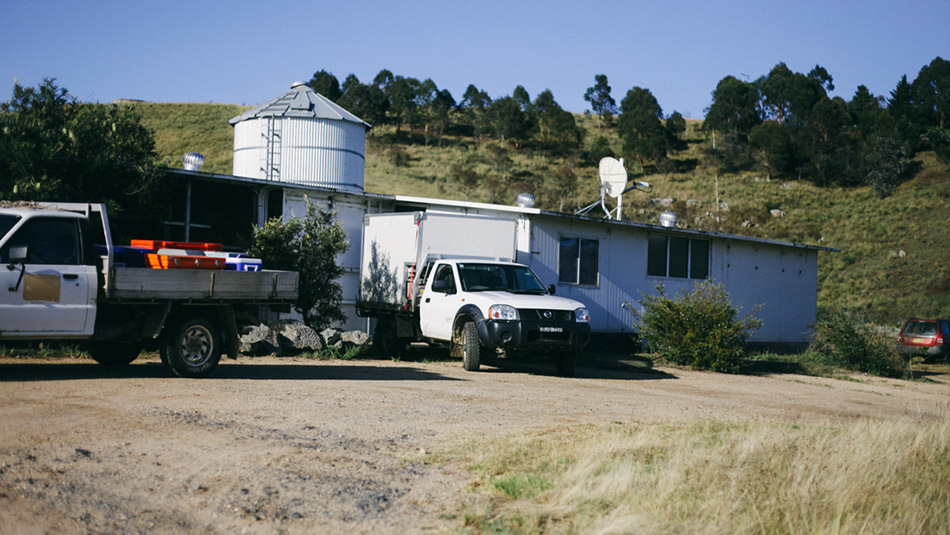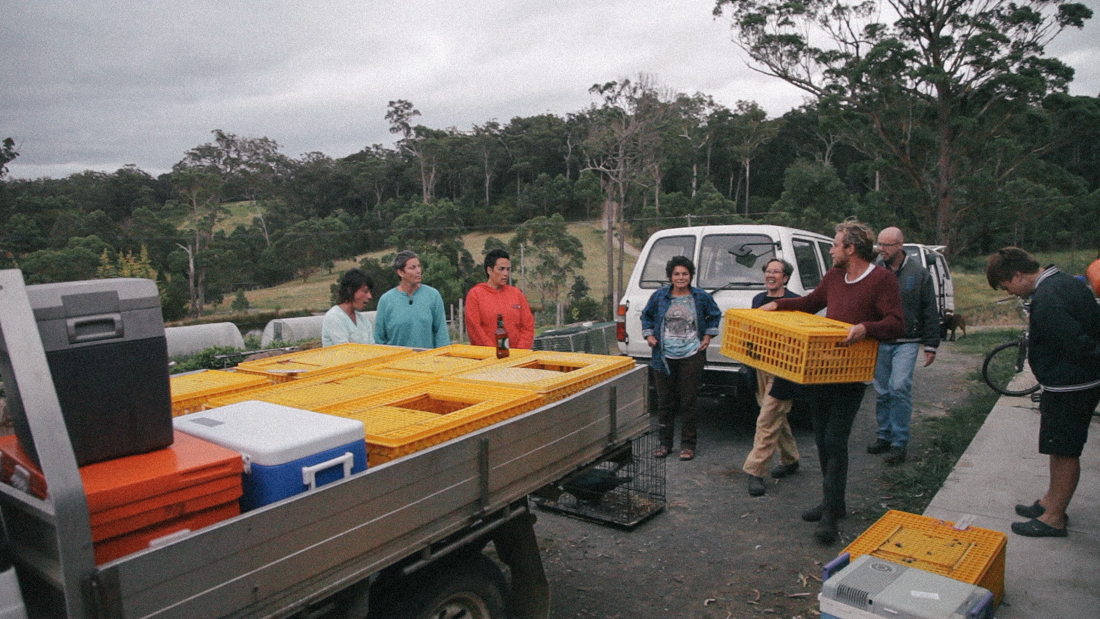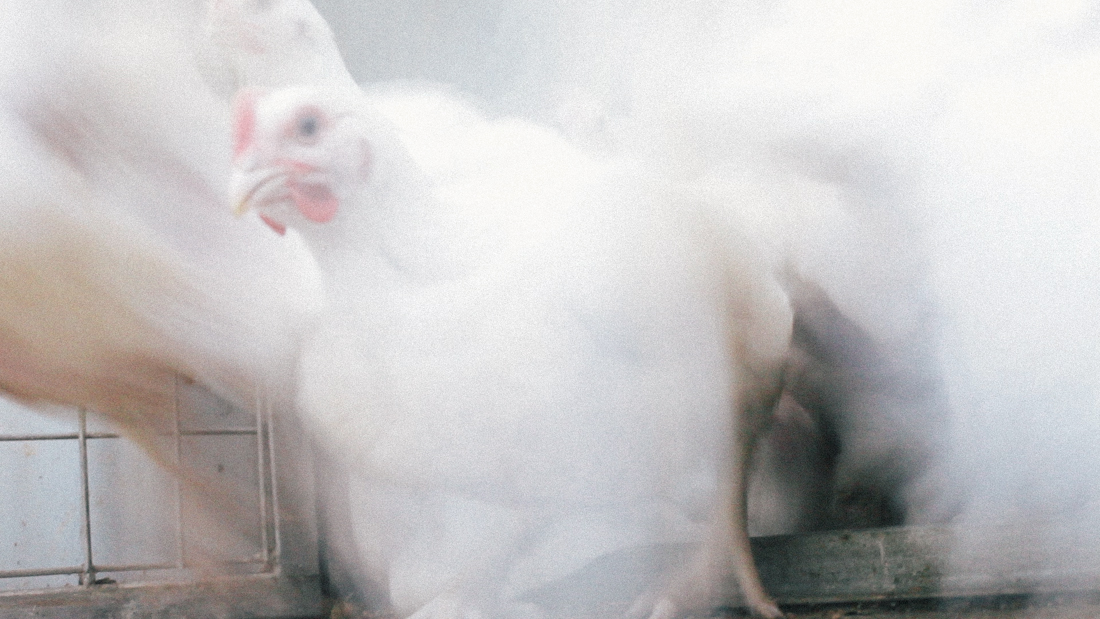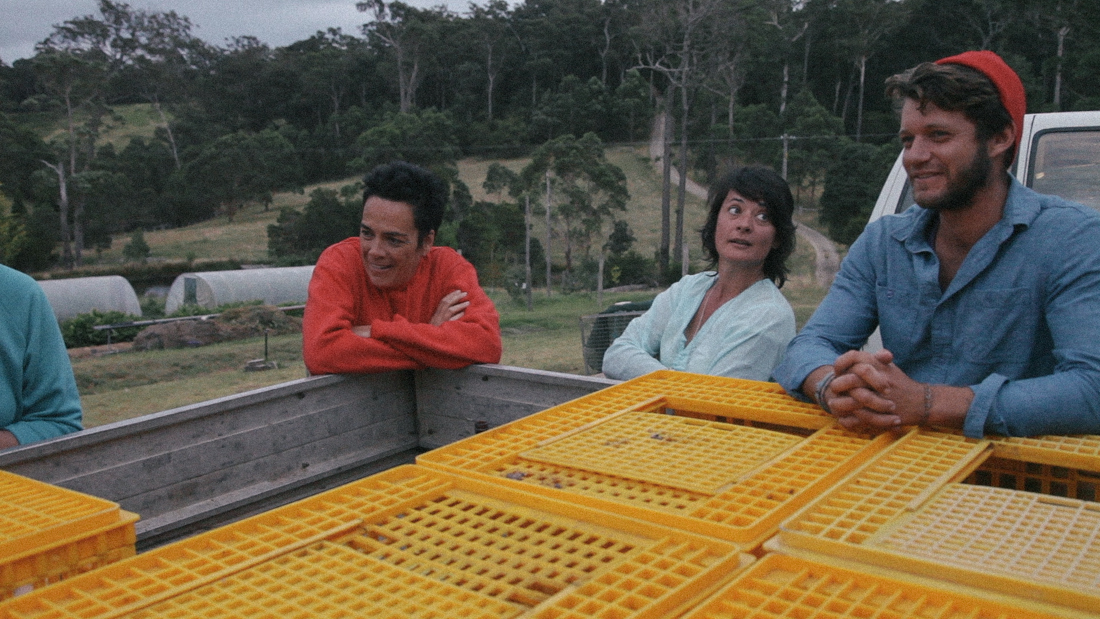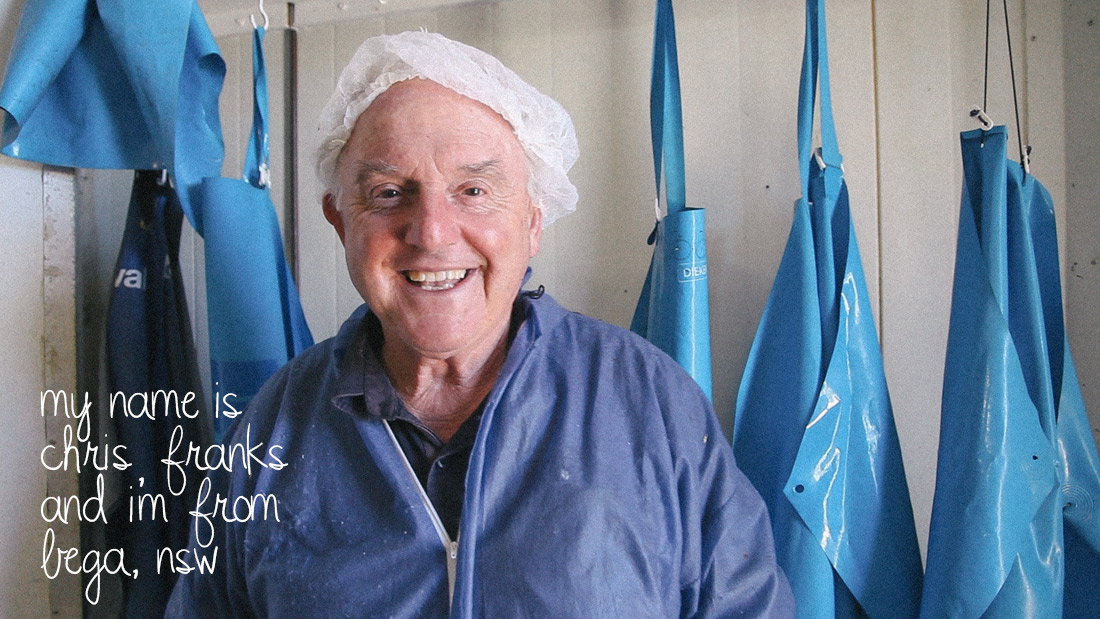
Chris Franks is the man behind Bega Valley Gourmet Meats, a small species abattoir on the picturesque outskirts of Bega on the south coast of NSW. The abottoir processes rabbits and free range poultry grown by local producers to meet the growing demand for a healthy alternative to the mass produced and processed variety. The abattoir is a unique asset to the area with only a handful of similar small scale operations in existence in the state.
We decided to see the process through from the grower to the abattoir right back to the plate. We meet with first time chicken suppliers who had rared their poultry from a few days old raised in the backyard. Motivations were varied from lending a hand to support the abattoir, to seeing how accessible it was to grow your own. What we saw was a proud group of individuals who cared for their role in the operation by giving their birds a genuinely free range existence. There’s something inescapably satisfying about reconnecting with where our food comes from, the simple act which we’ve become completely detached from. Can you imagine the conversations at the table when the home grown duck was carved? Each one of the those one hundred birds were destined to be enjoyed in good company with the story of how that meal came to be enthusiastically shared.
Could you tell us briefly describe the main benefits of homegrown meat?
- Fresh – available within hours of processing. ‘Fresh’ in a supermarket can be 3 days old (fresh chicken has a shelf life of 5 days under normal circumstances.)
- Grown in a chemical free environment – no growth promotants, no antibiotics, no internal or external drench residues (in unlikely case of being needed).
- Hand processed. All the messy bits removed with care. – Minimal chlorination of wash water only required, water also U/V treated to ensure ‘contamination free’ Note chlorination required 2 ppm (organic processing maximum 8 ppm)
- Chickens raised in ‘free range’ environment – access to pasture from 2 weeks (depending on weather) with adequate sunlight
- For small scale production, grower can adjust time of growing out and dietary inputs – to affect look and taste of product
- Grower has control of end product from day old to plate
Your operation has been running for about 12 years or so now. Where do you see the operation going from here?
Operating costs are increasing and now require that we have a minimum weekly throughput of some 300 meat chickens (or equivalent) to remain viable. We fall well short of this at the moment!
The operation can process 600 – 800 chickens in an 8 hour shift using a team of 10 workers and as the demand remains consistent for our ‘healthy alternative’ product, we would like to see that level of production develop.
We are licensed also to ‘bone and package’ red meats such as sheep, goats and cattle (but not to slaughter) Trials with red meat have been successful but would require an expansion of the facility to be a workable option and this means additional capital investment. We believe the demand for such an extension of our services exists. We are also aware that we are probably the last remaining hand processing facility operating in NSW that will provide a service to ‘home kill’ growers, those that grow their own poultry and rabbits for their own consumption and in the interests of ‘Regional food sustainability’ our operation must continue in one form or another.
